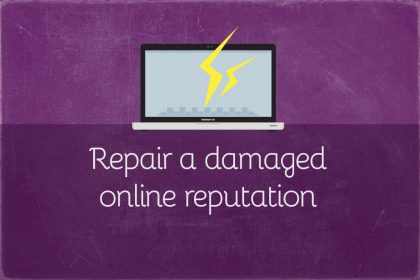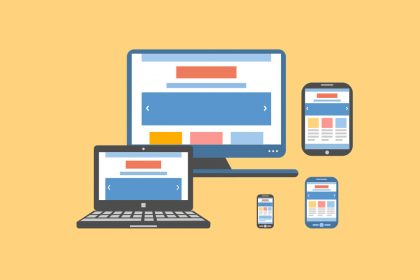Get your business stationery right – how to design effective marketing materials
Need to create business stationery? Read practical tips to help you create impressive business stationery that will act as a powerful marketing tool.
Even in today’s digital world, physical marketing remains as important to business success as ever. We still want to do business face-to-face, so we network. We still want to attract new customers locally, so we promote. And we still want to create a strong brand that takes a big share of the industry marketplace.
And for all this, business stationery marketing materials are a solid foundation on which to build your brand. Often physical marketing collateral is the first formal encounter a person will have with your business, so making a strong first impression matters.
It also pays dividends to present a quality, professional image of your business from the get-go, even if it’s just you working alone (and yes, even before you have official office space).
There are a host of reasons why this is good practice – from the fact that a branded business card is more likely to be kept and found than a scrap of paper with a handwritten phone number on it, to the fact that an invoice on branded stationary is easier to spot in an in-tray pile than a blank piece of paper.
So what do you need to do to create impressive business stationery? Online trade printing company quinnstheprinters.com share their advice.
Get your design right
The obvious initial challenge in designing your business stationary is the creation of a company logo.
If you don’t already have one, it’s worth investing in a professional design that uses colour, style and messaging to communicate what you do and who you are to new audiences. A low quality design or amateur effort will do more harm than good.
Make sure you get different versions of your logo so you can use it on and offline. For example, you’ll need a square cut for social media profiles and a longer version, possibly with your strap line, for letter heads.
If you include text in your designs, make sure it’s easily legible or the message will be lost on people. And make sure you give your message the chance to ‘breathe’ – trying to crowd too much into any available space will just look busy and put people off reading it. Instead use white space carefully and let your most important message shout loud and clear.
Create your own style guide
If your staff will be creating some of your leaflets and social media profiles it’s worth investing the time in putting together some basic style guide. This is a document with clear guidelines as to how your logo should be used – where to position it, what dimensions it should be and whether or not the colours can be changed.
The idea is to create consistency, maintain your brand reputation and keep things simple, because it is this constant repetition that will help your brand to resonate with everyone who sees it. (Read six reasons why branding is important for ALL businesses.)
Think about your audience
Make sure you focus your business stationary designs on the end audience. Who are you making them for? What will they appreciate? What message do you want to convey to them? Are there any important elements to consider, such as offering materials in larger print for seniors or people with sensory disabilities?
If you need to keep printing costs down but want to grab your audience’s attention, think of other ways to stand out. For example, using coloured paper or branded envelopes for your written communications.
To ensure your brand remains memorable and professional, click for mini envelopes that can add a distinctive touch to your stationery while keeping costs manageable. Just a small detail like this can make a big impact, helping your correspondence catch the eye and reinforcing your brand identity with every interaction.
What information do you need to include?
Next, think about what information you need to include on your stationery materials. You clearly want to direct people to the right source if they have a question or feedback. So contact details are important. Invoices will also need key information such as your tax registration number and business postal address.
The materials you choose for your stationery are as important as the messaging and overall tone of your branding, because they too communicate meaning.
So choose carefully. Will your audience appreciate a higher quality material, such as gloss laminate? Or do you work mostly with the not-for-profit sector, who would view that as wastage, or intimidating, and would prefer to see recycled materials?
If you have a more generic audience, the advice would be to opt for the highest quality materials your budget will allow.
Tips to help you create impressive business stationery
What about each individual element of your business stationery? Here are some tips to help you get them right.
Business cards
While many modern business owners are on LinkedIn, and may well have a social presence for their business online, such as a Facebook Page, business cards bring the personal touch. They’re a cost-effective marketing tool that means you always have a professional contact card easily to hand whenever an opportunity arises.
It’s a really good idea to incorporate more of your digital marketing into this particular product to maximise your connection opportunities and grow your online audiences simultaneously. That means signposting people to your website and profiles online, as well as adding your email and phone contact details.
Notepads
Branded notepads present a professional image when you use them yourself in meetings or at events, and are an excellent gift-type marketing product. When left with existing or potential clients they are almost always kept because of their usefulness. This means that your brand remains quite literally ‘under their nose’ much longer than any email or conversation would.
Notepads are often used for brainstorming, at meetings where procurement is being discussed or at planning sessions. This makes them a prime area to really sell your business and, with the added space available, you can include more than just your logo.
Think about including a short testimonial quote from a client in the bottom corner for example, providing that extra social proof.
Pens
As with notepads, desk pads and wall calendars, pens are a really practical marketing tool that keeps your brand front of mind for as long as they last (which is usually pretty long). Branded pens are a cost-effective gift that can be put into deal-closing information packs, left on front desks and given to event delegates.
The small space available requires you to be succinct in your marketing message, though. So think of the prime channel you want to direct people to – such as a website or phone number – and focus the design on that. Also steer towards black ink, which is more often required on official business documents than blue.
Letter heads
Branding who you are and what your business represents isn’t just about the obvious sales marketing tactics. It should ideally filter down through every interaction you have with external stakeholders, including mundane printed communications like invoices and letters.
For legal reasons it’s advisable to use branded letter heads on things like employment contracts, but it also creates a formal tone on all your documentation.
If you want to try a design that’s a bit different to the usual right-top-corner-logo, think of using a large watermark design that fills the page, or geometric coloured shapes around the page within which you can set the text.
Need more business promotion advice?
You can read more tips to help you spread the word about what you do in these articles:
- How to use testimonials to promote your business
- Need brand inspiration? Four companies you can steal ideas from
- How to write a case study – a quick and easy guide
- Writing a business newsletter? 14 things you need to include
quinnstheprinters.com are an online trade printing company based in Northern Ireland. They operate a 24-hour factory with five-colour printing that produces high quality, quick turnaround products for small entrepreneurs to big corporations across the UK and Ireland.










